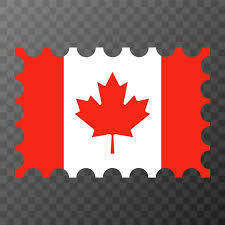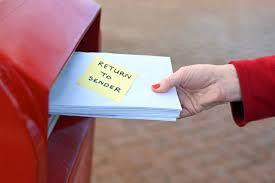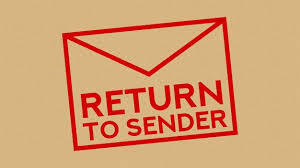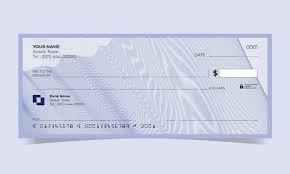Don't wanna be here? Send us removal request.
Text
Navigating Canada’s Postal System: A Breakdown of Current Postage Rates
Canada’s postal system is a vital service connecting millions of people and businesses across the country. Whether sending a postcard to a loved one or shipping a parcel internationally, understanding the current postage rates ensures that your mail reaches its destination efficiently and without unnecessary delays. This guide delves into the structure of Canada’s postal rates, the factors influencing them, and how to save money when sending mail.

Understanding Canada Post’s Pricing Structure
Canada Post calculates postage rates based on several factors:
Mail Type: Standard letters, non-standard mail, oversized mail, and parcels all have different rate categories.
Destination: Rates vary for domestic, U.S., and international destinations.
Weight and Dimensions: Heavier and larger items cost more to send.
Delivery Speed: Services like Priority, Xpresspost, and Regular Mail offer varying levels of speed and tracking.
Current Postage Rates (2024)
Standard Letter Mail (Domestic):
Up to 30g: CAD 1.07 (when using stamps).
30g–50g: CAD 1.30.
U.S. Destinations:
Up to 30g: CAD 1.30.
30g–50g: CAD 2.00.
International Destinations:
Up to 30g: CAD 2.71.
30g–50g: CAD 3.88.
For parcels, rates depend on the size and destination. Using Canada Post’s online rate calculator can help estimate costs accurately.
Saving on Postage Costs
Buy in Bulk: Purchasing stamps in booklets or rolls often comes with discounts.
Use Permanent Stamps: These can be used regardless of future rate increases.
Leverage Small Business Discounts: Canada Post offers reduced rates for frequent senders through programs like Solutions for Small Business.
Optimize Packaging: Keeping your items lightweight and within standard dimensions helps reduce costs.
Additional Services
Canada Post provides value-added services such as tracking, signature confirmation, and insurance for higher-value items. These services ensure peace of mind for important mail.
Eco-Friendly Mailing Tips
To align with global sustainability trends, consider using biodegradable packaging materials and consolidating shipments to reduce your carbon footprint.
youtube
SITES WE SUPPORT
Write Return Mails – Wix
0 notes
Text
Delivery Guarantee For Return Mail Live At Your Address
Managing return mail is a challenge for businesses and individuals alike. Canada Post's delivery guarantee for return mail ensures that undeliverable or misaddressed mail is returned promptly and reliably. This service adds a layer of security and accountability to the mailing process.

What is the Delivery Guarantee for Return Mail?
The delivery guarantee promises that return mail, such as undeliverable letters or parcels, will be redirected to the sender's address without unnecessary delays. It is particularly useful for businesses handling large volumes of mail.
How the Guarantee Works
Verification: Canada Post verifies that the mail cannot be delivered to the recipient.
Routing to Sender: The undeliverable item is routed back to the return address provided on the envelope or package.
Notification: Businesses or senders may receive notifications if tracking services are in place.
Benefits of the Delivery Guarantee
Reduced Mail Loss: Ensures mail is not discarded or lost in transit.
Improved Customer Relations: Prompt returns allow businesses to address issues quickly.
Tracking and Transparency: Track return mail and maintain accountability.
Steps to Ensure Proper Handling of Return Mail
Include a Clear Return Address: Ensure the return address is prominently displayed.
Use Durable Packaging: Secure packaging minimizes damage during transit.
Employ Tracking Services: Opt for Canada Post tracking options to monitor return mail.
Tips for Businesses Using Return Mail Services
Implement address verification software to minimize errors.
Regularly update recipient databases to prevent undeliverable mail.
Consider using prepaid return labels for a seamless customer experience.
Conclusion
Canada Post’s delivery guarantee for return mail, coupled with their Return to Sender services, simplifies the mailing process for individuals and businesses. By understanding how these services work and implementing best practices, you can ensure that undeliverable mail is handled efficiently, safeguarding your correspondence and maintaining trust.
youtube
SITES WE SUPPORT
Write Return Mails – Wix
0 notes
Text
Return to Sender Postage For Canada Post Parcels
Receiving undeliverable mail or parcels can be a frustrating experience. Canada Post offers "Return to Sender" services to address this issue, ensuring parcels reach their intended destinations or return to the sender efficiently. Let’s explore how this service works, who benefits, and the costs involved.

What Does "Return to Sender" Mean?
"Return to Sender" is a service provided by Canada Post to handle undeliverable parcels. If a delivery cannot be completed due to incorrect addresses, recipient refusal, or unclaimed mail, the parcel is returned to the sender.
Common Reasons for Return to Sender
Incorrect Address: Errors in the recipient's address prevent delivery.
Recipient Moved: If the recipient has relocated without updating their address, the parcel cannot be delivered.
Unclaimed Parcels: Items left at postal offices for extended periods are returned if not collected.
Refused Delivery: The recipient declines to accept the parcel.
Postage Requirements for Return Mail
When a parcel is returned to the sender, Canada Post may require additional postage depending on the circumstances:
Prepaid Return Labels: If the sender includes a prepaid return label, no additional costs are incurred.
Unpaid Returns: If no return label is provided, Canada Post charges the sender for return postage based on the parcel’s size, weight, and destination.
Steps to Use Return to Sender Services
Mark the Parcel: Clearly indicate "Return to Sender" on the package.
Provide Sender Address: Ensure the sender's address is visible on the parcel.
Drop It Off: Hand the parcel to a Canada Post location or place it in a mailbox.
Tips for Avoiding Return to Sender Situations
Verify recipient addresses before sending.
Provide a prepaid return label for easy returns.
Use Canada Post’s tracking services to monitor delivery.
Who Benefits from Return to Sender Services?
Both senders and recipients gain from this service:
Senders: Avoid lost parcels and maintain customer satisfaction.
Recipients: Ensure undeliverable parcels reach the correct sender for follow-up action.
youtube
SITES WE SUPPORT
Write Return Mails – Wix
0 notes
Text
Navigating the Basics of Writing a Cheque in Canada
In the digital age, where online banking and e-transfers dominate, writing a cheque may seem like an outdated practice. However, cheques remain a vital tool in various scenarios, such as paying rent, making donations, or issuing refunds. Understanding the correct way to write a cheque in Canada ensures smooth transactions and prevents errors or potential fraud. Let’s explore the basics of cheque writing to help you stay financially savvy.

What is a Cheque?
A cheque is a written, dated, and signed document instructing a financial institution to pay a specific amount of money to a designated person or entity. While simple in concept, filling out a cheque incorrectly can lead to payment delays or disputes.
Step-by-Step Guide to Writing a Cheque in Canada
Write the Date Begin by entering the date in the upper right-hand corner. Use the standard Canadian date format (YYYY/MM/DD) to avoid confusion.
Payee Name In the "Pay to the Order of" line, write the name of the individual or organization receiving the funds. Double-check the spelling, as inaccuracies may render the cheque invalid.
Amount in Numbers Clearly write the amount in numerical format in the designated box. Include cents using a decimal point (e.g., 123.45).
Amount in Words Spell out the amount in words on the line below the payee name. For example, write "One hundred twenty-three dollars and forty-five cents." This reduces ambiguity and serves as a secondary verification.
Memo Line (Optional) The memo line, located at the bottom left, allows you to indicate the purpose of the cheque (e.g., “Rent for April”). While optional, it can be helpful for record-keeping.
Signature Sign the cheque at the bottom right. Your signature authorizes the payment and ensures the cheque is legally binding.
Tips for Secure Cheque Writing
Use a Pen: Always use a pen to prevent alterations.
Avoid Blank Spaces: Fill out all lines completely to deter fraud.
Cross Through Unused Areas: Draw a line through any blank spaces on the cheque to eliminate opportunities for tampering.
When to Use Cheques
Despite the popularity of digital payment methods, cheques are still widely used for:
Large transactions that require documentation.
Payments to businesses or landlords that prefer physical cheques.
Gifts or donations to organizations.
Understanding Post-Dated and Cancelled Cheques
A post-dated cheque is dated for a future day, ensuring the recipient cannot cash it until that date. A cancelled cheque, on the other hand, is a voided cheque often used to provide banking information for direct deposits.
youtube
SITES WE SUPPORT
Write Return Mails – Wix
0 notes
Text
How to Write a Cheque in Canada: A Simple, Easy-to-Follow Guide
Writing a cheque in Canada remains a valuable skill, despite the growing popularity of digital payments. Cheques are still widely used for rent payments, business transactions, and other formal financial exchanges. Here's a step-by-step guide to writing cheque correctly:

1. Start with the Date
The date is written in the top-right corner of the cheque. Use the format: YYYY-MM-DD. For instance, write 2024-11-18 for November 18, 2024. A properly dated cheque ensures timely processing.
2. Write the Payee's Name
In the "Pay to the order of" field, clearly write the name of the individual or organization receiving the payment. Ensure correct spelling to avoid delays or rejections.
3. Enter the Amount in Numbers
In the box provided, write the amount you wish to pay in numbers, including cents (e.g., 100.50). Ensure the decimal point is clear to avoid misunderstandings.
4. Spell Out the Amount in Words
Write the amount in words on the line below the payee's name. For instance, $100.50 would be written as: "One hundred dollars and fifty cents." Draw a line through any unused space to prevent unauthorized alterations.
5. Add a Memo (Optional)
The memo line, located in the bottom-left corner, is optional but helpful. You can use it to specify the purpose of the payment, such as "November Rent" or "Invoice #12345."
6. Sign the Cheque
Sign the cheque in the bottom-right corner. Your signature must match the one on file with your bank. Without a valid signature, the cheque will not be processed.
7. Review for Accuracy
Before handing over the cheque, double-check all details, including the date, payee name, amount, and signature, to ensure accuracy. Errors could lead to rejected payments or delays.
Important Tips:
Keep Cheques Secure: Store cheques in a safe place to prevent fraud.
Record Your Transactions: Maintain a record of issued cheques in your cheque register or banking app.
Use Ink: Always use a pen to fill out cheques, as pencil markings can be altered.
Benefits of Writing Cheques
Payment Flexibility: Cheques are a preferred payment method for formal transactions.
Control Over Payments: You can specify dates and amounts with precision.
Record Keeping: Cheques provide a paper trail for financial documentation.
Learning how to write a cheque correctly ensures secure and hassle-free transactions, whether for personal or business purposes. While digital alternatives are gaining traction, cheques remain a trusted and reliable payment method in Canada.
youtube
SITES WE SUPPORT
Write Return Mails – Wix
1 note
·
View note